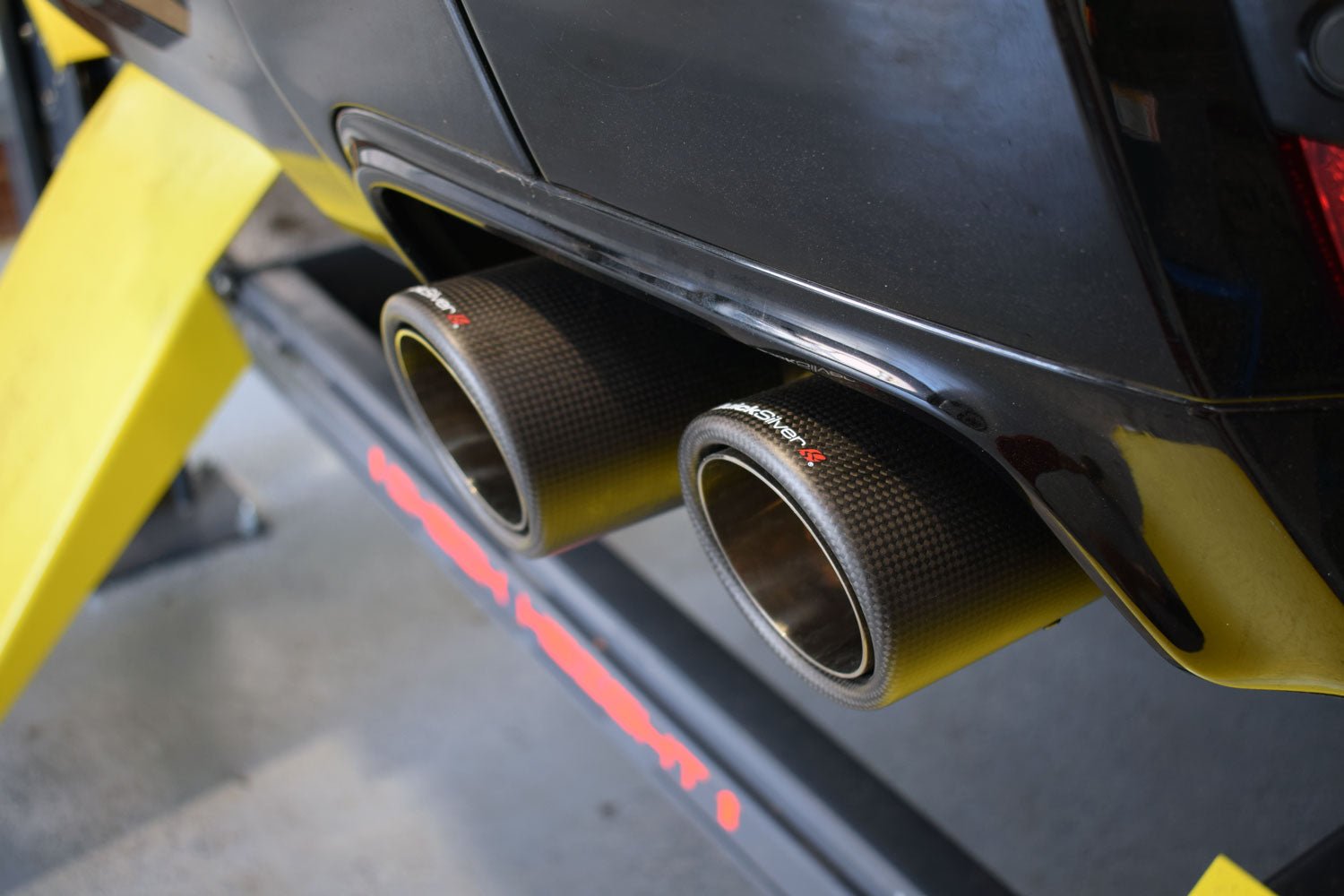The Impact of Humidity on Exhaust System Durability
When it comes to the longevity of your vehicle’s exhaust system, the role of environmental factors cannot be overlooked. One key factor is humidity, which can significantly influence the health and durability of your exhaust components. Understanding how humidity affects exhaust systems can help you take preventative measures to ensure their longevity.
High humidity environments can create a perfect storm for corrosion. Exhaust systems are typically made of metals, which are susceptible to rust. When the air is humid, it contains more moisture, which leads to condensation. This moisture can accumulate on your exhaust components, particularly during colder months or when your vehicle is parked. Over time, this constant exposure to moisture can cause the metal parts to corrode, leading to expensive repairs or replacement.
In regions with high humidity, rust may develop at a faster rate. Here’s how humidity directly impacts your exhaust system:
- Condensation Build-up: When you drive, especially during cooler temperatures, warm exhaust gases exit the system and meet the cooler air. This temperature difference leads to condensation forming inside the exhaust pipes.
- Corrosive Environment: Humid air can carry pollutants and salts, which can enhance the corrosiveness of the environment around the exhaust system. This is particularly common in coastal areas, where salt in the air increases the risk of rust.
- Increased Maintenance Needs: Vehicles operating in high-humidity areas may require more frequent inspections and maintenance. A regular check can help identify early signs of rust or damage that humidity may have caused.
It’s essential to recognize that the materials used in your exhaust system can dictate how well it withstands humidity. Stainless steel is often preferred for exhaust systems because of its resistance to corrosion. However, not all vehicles come equipped with high-quality materials, making those vehicles more vulnerable to humidity-related damage.
If you find yourself living in a humid climate, consider taking additional steps to protect your exhaust system. Here are some effective strategies:
- Regular Cleaning: Wash your vehicle regularly, focusing on the undercarriage where the exhaust system is located. Removing dirt and grime can help prevent moisture accumulation.
- Protective Coatings: Applying a rust-proof coating to the exhaust system can not only enhance its lifespan but also add an extra layer of protection against humidity.
- Ensure Proper Ventilation: Always park in a well-ventilated area. This can help reduce humidity buildup around the vehicle and exhaust system.
Additionally, be vigilant about any unusual sounds or odors coming from the exhaust. A change in noise or a strong, unpleasant smell may indicate a problem, potentially linked to corrosion. If you notice any signs of trouble, it’s best to consult a mechanic promptly. Early intervention can save you from more significant issues down the line.
One aspect that’s crucial to consider is how humidity interacts with internal engine functions. If your exhaust system is constantly dealing with high levels of moisture, it can also lead to higher exhaust-back pressure, which puts additional strain on the engine. This added stress may not only affect the longevity of the exhaust system but can also lead to reduced engine performance.
Humidity is a major player in the game of exhaust system durability. Its ability to promote corrosion and rust means that those living in damp climates need to take valuable steps to protect their vehicles. By being proactive and taking proper care of your exhaust system, you can significantly extend its life and maintain optimal vehicle performance.
Retention of knowledge about humid conditions can help you appreciate the importance of routine maintenance and mindful driving. Maintaining a dry and clean environment for your exhaust system will ultimately pay dividends in the form of longevity and reliability in your vehicle’s performance.
How Extreme Temperatures Challenge Exhaust Components
Extreme temperatures can have a significant impact on the longevity of exhaust components in your vehicle. Whether dealing with extremely hot weather or frigid cold, these conditions stress parts of the exhaust system. Understanding how these temperature fluctuations affect your vehicle’s exhaust can help you take better care of it.
Effects of High Temperatures
When the temperature rises, several factors come into play that can lead to accelerated wear and tear on your exhaust system:
- Thermal Expansion: Metals expand when heated. As exhaust components heat up, they may expand and then contract when cooled. This constant cycle can cause cracks and weaken joints over time.
- Increased Corrosion: High temperatures can intensify the effects of corrosion. Moisture from summer rains can cause rust, especially in areas where the exhaust system is exposed to road salt.
- Failing Gaskets: Gaskets in the exhaust system, designed to create seals, can degrade more quickly in elevated temperatures. This can lead to exhaust leaks, which negatively impact engine performance.
- Material Fatigue: Components that constantly face extreme heat can become brittle. Over time, this can result in a failure of parts like catalytic converters and mufflers.
Effects of Low Temperatures
Cold weather brings its unique challenges for the exhaust system:
- Cold Starts: Starting your vehicle in freezing temperatures leads to condensation building up in the exhaust. This moisture can mix with exhaust gases and cause rust, especially if the vehicle isn’t driven for long periods.
- Reduced Efficiency: When temperatures drop, the exhaust system may not operate at its optimal temperature. This can lead to increased emissions and affect the performance of components such as the oxygen sensors and catalytic converters.
- Vibration and Noise: Cold weather can make exhaust parts more rigid. Rigid connections are more likely to vibrate and create noise, which can lead to loosening or detachment of components over time.
- Frozen Parts: Certain exhaust parts can freeze if temperatures are low enough. Components such as the hangers or brackets can become brittle, leading to breakage.
Protecting Your Exhaust System
Taking proactive steps can help extend the lifespan of your exhaust components, regardless of temperature extremes:
- Regular Inspections: Schedule routine inspections of your exhaust system, especially before changes in season. Look for signs of rust, cracks, and loose connections.
- Keep It Clean: Washing your vehicle often can remove salt and debris that contribute to corrosion. Pay special attention to the undersides and exhaust pipe areas.
- Use Quality Materials: If you need replacements, opting for higher quality, heat-resistant materials can prevent premature wear and damage.
- Drive Regularly: Using your vehicle frequently helps maintain a steady operating temperature, which minimizes condensation. Additionally, longer drives help burn off moisture that builds in the exhaust.
Understanding Exhaust Components
Your exhaust system consists of several critical parts that work together. Familiarizing yourself with these components may help you appreciate the wear they endure during extreme temperatures:
- Exhaust Manifold: Collects exhaust gases from the engine.
- Catalytic Converter: Reduces harmful emissions and may be damaged by excessive heat or corrosion.
- Muffler: Reduces noise from the exhaust.
- Exhaust Pipes: Transport exhaust gases to the rear of the vehicle.
Extreme temperatures present challenges that can be avoided with regular maintenance and care for your exhaust system. By understanding how their performance is affected—and implementing preventive measures—you can help ensure that your vehicle remains in good condition, ultimately extending the life of your exhaust components. Protect your investment, and give your vehicle the attention it needs to thrive in all weather conditions.
The Role of Road Salt in Corroding Exhaust Systems
Many drivers don’t realize that road salt, often used to melt ice and snow during winter months, can have serious effects on their vehicle’s exhaust system. While it makes driving safer and more manageable, the salt can lead to corrosion—a process that damages components and shortens the lifespan of your exhaust system. Understanding how road salt affects exhaust systems is essential for vehicle maintenance and safety.
How Road Salt Causes Corrosion
Road salt primarily consists of sodium chloride (NaCl), which is highly effective at lowering the freezing point of water. However, when used on roads, it can easily splash onto vehicles. Once on the vehicle, it can get trapped in various areas, including the undercarriage and exhaust system.
Here’s how road salt causes corrosion:
- Chemical Reaction: Sodium chloride reacts with moisture to create brine, which accelerates oxidation. This reaction can compromise the metal components of the exhaust.
- High Humidity: In regions where humidity is high, the moisture trapped in salt can lead to rust formation even after winter. This ongoing exposure can be detrimental.
- Temperature Changes: Rapid temperature changes can also exacerbate the effects of road salt. For instance, cold weather can cause the salt to form ice, leading to cracking that allows further moisture entry.
Components of the Exhaust System At Risk
The exhaust system consists of various components, including the exhaust manifold, catalytic converter, muffler, and exhaust pipes. Each of these parts can be weakened by road salt corrosion:
- Exhaust Manifold: This part handles hot gases from the engine. When it becomes corroded, it may develop leaks, leading to harmful emissions.
- Catalytic Converter: A critical component that reduces harmful emissions, the catalytic converter is also vulnerable. Corrosion can affect its efficiency and lead to costly repairs.
- Muffler: This component significantly impacts sound levels. Corrosion can create holes, leading to excessive noise and performance issues.
- Exhaust Pipes: These pipes are often exposed to the harsh environment and are frequently the first components to show signs of rust and damage from road salt.
Signs of Corrosion in the Exhaust System
Being aware of the signs of corrosion can help you catch issues before they become severe. Here are some warning signs to look out for:
- Unusual Noises: If you hear rattling, hissing, or loud noises, it might indicate a rusted or damaged muffler or exhaust pipe.
- Foul Smell: A strong odor from the exhaust may suggest a leak, which can compromise the exhaust system’s integrity.
- Decreased Performance: If your vehicle has trouble accelerating or maintains poor fuel efficiency, it could be due to exhaust restrictions from corrosion.
- Visible Rust: Spotting rust or flakes around any of the exhaust components indicates corrosion has already begun.
Ways to Protect Your Exhaust System
Protection against road salt corrosion is key to maximizing your exhaust system’s longevity. Here are some effective strategies:
- Regular Washing: Washing your vehicle frequently during winter can help remove road salt buildup from critical areas.
- Undercoating: Consider applying an undercoat treatment to shield vulnerable areas, helping to prevent direct salt exposure.
- Routine Inspections: Conduct regular inspections of the exhaust system, paying close attention to rust spots or damage.
- Replace Compromised Parts: If you notice any corrosion, replace affected components as soon as possible to prevent it from spreading.
By understanding the role of road salt in corroding the exhaust system and taking proactive steps to protect your vehicle, you can help ensure its longevity and maintain optimal performance. A well-maintained exhaust system not only keeps your vehicle running smoothly but also contributes to a cleaner environment by minimizing harmful emissions.
Seasonal Changes: Their Effect on Vehicle Maintenance
As the seasons change, your vehicle requires different types of maintenance to stay in top shape. Each season brings its own set of challenges that can affect the performance, safety, and longevity of your car. Understanding how these seasonal changes affect vehicle maintenance is essential for every driver. Here are some key considerations to keep your ride running smoothly through the seasonal shifts.
Spring Maintenance
Spring is a time of renewal, but it also calls for some vehicle upkeep. After a winter filled with cold temperatures and icy roads, your car may need some attention.
- Check for Corrosion: Salt from winter roads can cause corrosion to your vehicle’s undercarriage. Inspect and clean this area to prevent rust.
- Inspect Wipers: After a season of snow and rain, check your windshield wipers. Replace them if they show signs of wear or streaking.
- Tire Pressure: As temperatures rise, tire pressure may increase. Monitor your tire inflation to ensure even wear and prolong longevity.
- Fluid Levels: This is a good time to flush and refill fluids like coolant, brake fluid, and windshield washer fluid to promote optimal vehicle performance.
Summer Care
Summer heat can be tough on your vehicle. Higher temperatures put stress on various systems.
- Cooling System: Inspect and, if necessary, service the cooling system to prevent overheating. This includes checking the radiator, hoses, and thermostat.
- Battery Maintenance: Heat can reduce battery life. Ensure battery terminals are clean, and consider testing the battery’s condition.
- Tire Care: Monitor tire alignment and tread wear. Hot pavement can exacerbate tire degradation, so keep an eye out for bulges or cracks.
- Air Conditioning System: Regularly check and service the A/C system to enjoy a comfortable ride and avoid breaking down in the heat.
Autumn Adjustments
As leaves start to fall, it’s time to prepare your vehicle for the impending cold and wet weather.
- Oil Change: Change the oil to ensure your engine runs efficiently during the chilly months. Ensure you use the recommended oil type based on the temperature drop.
- Battery Check: Falling temperatures can challenge your battery. Test its charge to avoid getting stranded.
- Tire Inspection: As you have done in summer, check your tire condition. Consider switching to winter tires if your area experiences heavy snowfall.
- Brake Inspection: With potential slippery roads, ensure your brakes are in perfect working condition. Have them checked and serviced if needed.
Winter Preparations
Winter can be extremely harsh on vehicles. Thus, it’s vital to take specific steps to ensure safety and performance.
- Winter Tires: Invest in good-quality winter tires for superior traction. Make the switch early to avoid safety risks.
- Antifreeze Levels: Ensure your coolant system is filled with antifreeze to prevent freezing in unbearable temperatures.
- Windshield Cover: Use a windshield cover to prevent ice build-up, or park your car in a garage for extra protection.
- Emergency Kit: Pack an emergency kit with essential items including blankets, a flashlight, and basic tools to keep you safe on the road.
Regular maintenance tailored to the change of seasons not only enhances your vehicle’s performance but also extends its lifespan significantly. By taking these proactive steps, you can enjoy a safer and more reliable ride, no matter what the weather throws your way. Embrace the seasonal shifts in your vehicle maintenance routine to promote your car’s longevity and functionality!
Preventive Measures for Protecting Exhaust Systems in Harsh Weather
Weather can be tough on your vehicle, especially on the exhaust system. Rain, snow, and even extreme heat can lead to premature wear and tear, affecting your car’s performance. Fortunately, there are some simple preventive measures you can take to protect your exhaust system from the harsh conditions it may face.
Understanding the Risks
Your exhaust system plays a vital role in your vehicle, helping to expel harmful gases and reducing engine noise. However, various weather conditions can cause damage over time:
- Moisture: Rain and high humidity can lead to rust and corrosion, particularly if the exhaust system is made from steel.
- Cold: Frost and snow can freeze water in the exhaust, potentially causing blockages.
- Heat: Extreme temperatures may cause the metal to expand and contract, leading to cracks.
Regular Inspections
One of the best ways to keep your exhaust system healthy is to conduct regular inspections. Aim to check the condition of your exhaust system at least twice a year, especially before the onset of winter and summer.
During these inspections, look for signs of:
- Rust or corrosion
- Holes or cracks in the pipes
- Loose or damaged hangers
- Excessive noise while the engine is running
Invest in Quality Materials
If it’s time to replace part of your exhaust system, consider investing in high-quality, rust-resistant materials. Stainless steel components can withstand harsh weather better than standard steel. These materials can help prolong the life of your exhaust system, saving you time and money in the long run.
Protective Coatings
Applying a protective coating to your exhaust system can significantly enhance its durability. Many auto supply stores offer high-temperature paint specifically designed for exhaust systems. This paint acts as a barrier against moisture and roads salt, helping to prevent rust.
Keep It Clean
Regular cleaning can also protect your exhaust system. Road salt and dirt can accumulate, leading to corrosion. After any winter driving, it’s a good idea to wash your undercarriage to remove salty residues. Additionally, consider:
- Using a pressure washer to remove built-up grime.
- Cleaning any leaks or connections to help watch for other issues.
Drainage Systems
Proper drainage is essential for preventing excessive moisture in your exhaust system. Ensure that any water can easily flow away from the exhaust pipes, especially after heavy rain or snow. You can:
- Make sure your vehicle isn’t parked on a slope that traps water.
- Check for proper drainage in the area around where you park.
Use Your Vehicle Regularly
Regular use of your vehicle can help keep the exhaust system in good condition. When the engine runs, it heats up and helps evaporate moisture that might otherwise contribute to rust. If you only drive occasionally, try taking longer trips on weekends to give the exhaust system a good workout.
Consider a Rust Inhibitor
Some products can be sprayed or applied to the exhaust system to act as a rust inhibitor. These sprays create a protective barrier, helping to shield your exhaust system from moisture damage. Use these in conjunction with other preventive measures to enhance protection against harsh weather.
Pay Attention to Warning Signs
If you notice changes in your vehicle’s exhaust system, such as strange noises, reduced power, or increased fuel consumption, address them immediately. Ignoring these signs can lead to more significant issues that are costly to repair.
Driving in severe weather doesn’t have to put your exhaust system at risk. By taking these preventive measures, you can enhance the longevity of your exhaust system and keep your vehicle running smoothly. Regular checks, quality replacements, and proper cleaning can go a long way in protecting your investment. Remember, when you safeguard your exhaust system, you’re ensuring a safer, more efficient drive despite the weather conditions.
Conclusion
Understanding how weather conditions affect your vehicle’s exhaust system is crucial for maintaining its longevity and functionality. High humidity levels can accelerate the corrosion process, leading to premature wear and damage. Additionally, extreme heat can cause metal components to expand, while severe cold can lead to contraction and cracking, creating challenges for exhaust durability.
Seasonal changes introduce new hazards, particularly due to road salt, commonly used in winter months. This salt can cling to various parts of the exhaust system, further enhancing the risk of rust and deterioration if not managed properly. By staying alert to these conditions, you can anticipate the effects they might have on your vehicle.
Implementing preventive measures is essential for safeguarding your exhaust system against harsh weather. Regular inspections, appropriate undercoating, and prompt repairs can make a significant difference in producing a robust exhaust system capable of withstanding nature’s challenges.
By taking these proactive steps, you can extend the life of your exhaust system, ensuring your vehicle performs optimally through every season. Being mindful of weather influences not only extends your car’s lifespan but also helps to maintain its efficiency, contributing to a smoother and safer driving experience. Investing time in proper vehicle maintenance will pay off in the long run, saving costs related to repairs and replacements while keeping your vehicle in the best shape possible. Stay prepared and proactive to enjoy every ride to its fullest.





